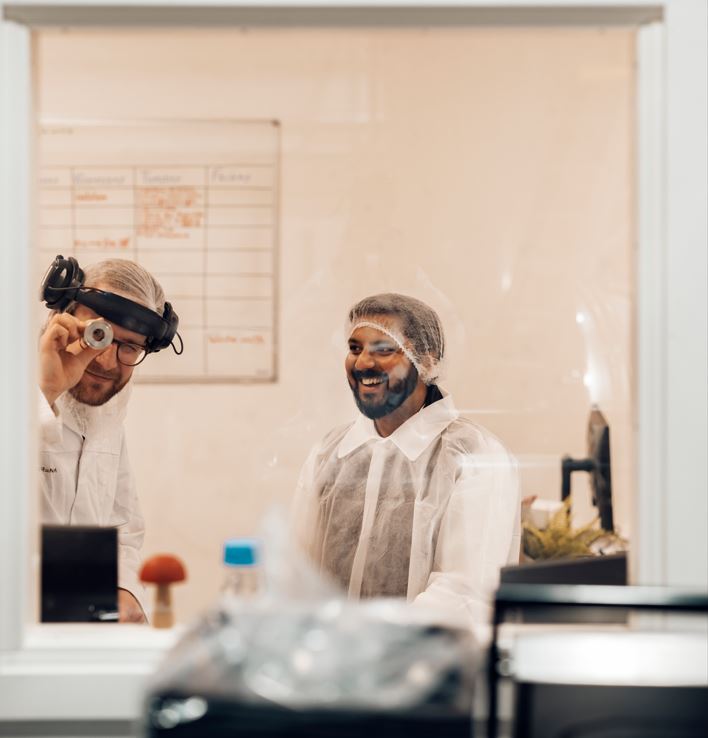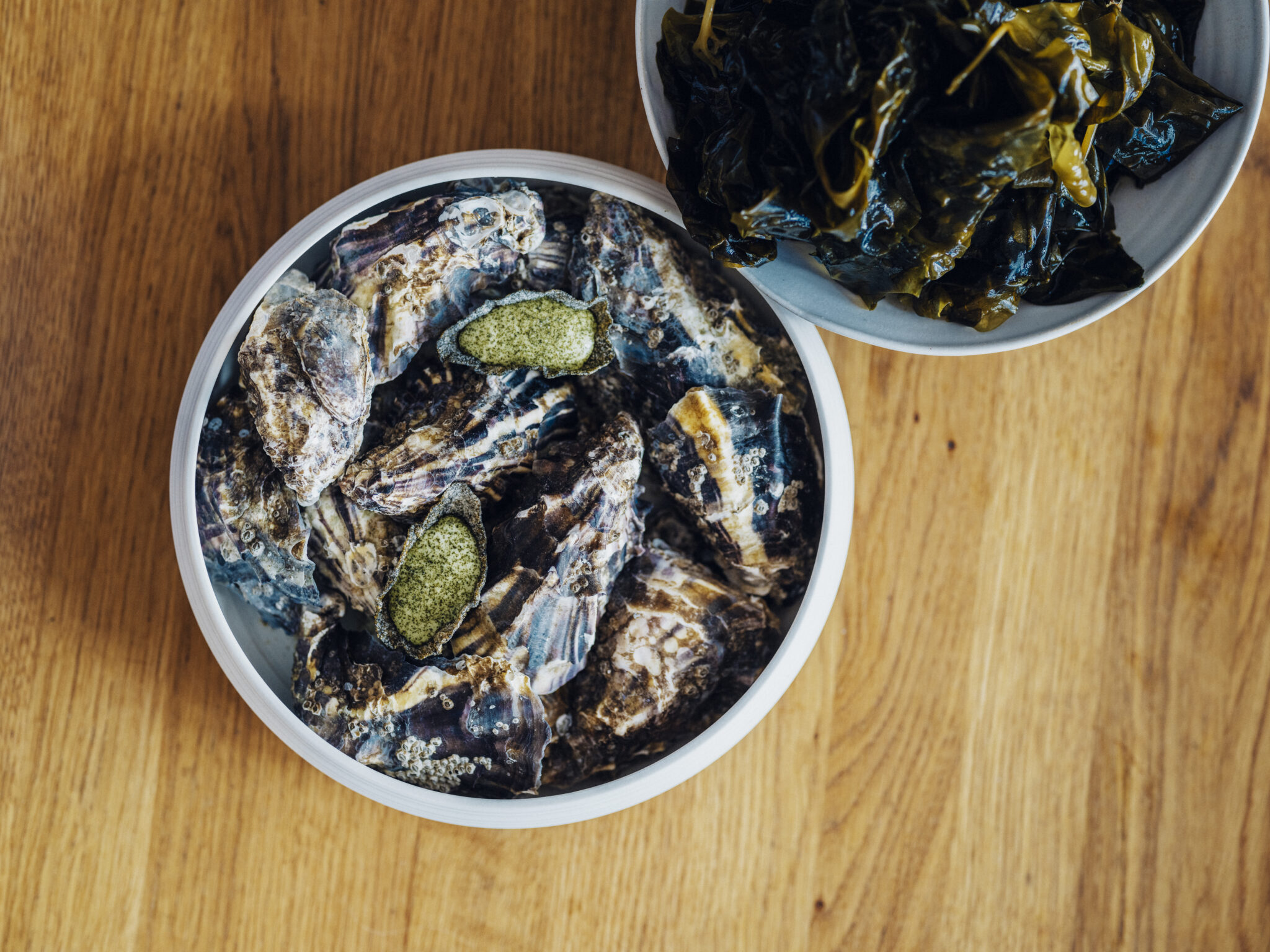A taste of the future
What does manufacturing of Volvo cars and food production have in common? They both require complex systems and clusters. Where the embryo for Volvo was once created and there were rows of slaughterhouses, entrepreneurs and researchers are now taking novel approaches to future food production – with no slaughter involved.

Food is emotional
Most people dislike others having opinions about what (and how) they eat. There are meat only ‘lion diets’, and vegan counterparts. Disapproving glances at a sandwich with a thick layer of butter. We want to keep our sandwich to ourselves as long as we feel good. Or do we?
“Food is an experience. We cannot stuff ourselves with just anything, as it may be bad for the climate and our health, even if it is nicely packaged.” This is the opinion of former Chicago resident Jonathan Converse, who came to Gothenburg for love and to work at Volvo Cars. As an economist and political scientist, he became interested in what lessons can be learned from the complexity of vehicles in an industry that is completely dependent on functioning supply chains.
“With several cases of illness in the family, I became very interested in causal relationships between lifestyle, food, health and climate, to see if technological progress in the automotive industry could be carried over to the food systems of the future.”
Around that time Jonathan met food entrepreneur Matts Johansson, who wanted some advice to take the successful Gothenburg chain DaMatteo to the global market. The one with the award-winning coffee and the circular menu planning mindset.
“We shared views on how much the food system impacts people’s lives. And how vulnerable it is. An increasing urban population requires fast-moving supply chains and more local food production in urban environments.“
Perhaps the war against Ukraine has made us more aware of the vulnerability. The economy is also central. To understand flows and how production can be made more efficient without taxing the climate unreasonably. A lot of data in the food system remains unused”, says Jonathan.
In his view, the automotive industry’s direct sales to consumers are interesting to learn from and show that the brand plays an increasingly important role, as does a personal relationship between manufacturer and customer.
It is an exciting thought that the food and food systems of the future are being developed right here in Gothenburg’s Gamlestaden. In the old slaughterhouse district. This is where SKF and Volvo were actually born, with Sven Wingqvist’s innovation of the ball bearing.
A growing number of innovative food companies
With a growing number of innovative food companies on site in Gamlestaden, there are visions of a future science park for food systems. That is something of a goal for Jonathan Converse and Matts Johansson, who are forming a foundation for sustainable food production. Cross-functional joint ventures on food production, however, are not popping out of the ground like mushrooms (even though mushrooms are being grown here). Among the companies on site is the food-tech company Mycorena, which produces mushroom-based protein through fermentation. A cistern in Mycorena’s laboratory can produce protein equivalent to an entire cow. Basically, the only thing needed is water and carbohydrates. Consumers can enjoy nuggets that taste like chicken, without a single hen involved.

New sources of protein
It is complex to develop completely new sources of protein, but there are still many untapped sources.
Nordic Seafarm, which supplies sugar kelp and sea lettuce for both luxury restaurants and grocery stores, is one of the companies working on that. They are renting facilities in Gamlestaden. Simon Johansson, CEO, wants to build Europe’s largest seaweed company. Seaweed is a common ingredient in Asian cuisine with a clear umami taste while also being a bundle of protein, omega3 fats and fibre. When Simon Johansson, who is actually an engineer, worked in the Middle East as a strategy consultant, he realised that Europe was far behind, especially in farming, processing and eating seafood. This, he found strange, since it has so many benefits, both nutritionally and for the climate.
“The sea offers many solutions for the sustainable food production of the future”, says Simon Johansson.
Back home in Gothenburg, Simon got in touch with what was still a research and development company, Nordic Seafarm. Two years later he became CEO.
“Though we initially heard mostly from fine dining restaurants, the demand for seaweed has grown year by year to also include major supermarket chains. Seaweed is becoming an increasingly important food with a 15–20 percent growth per year. We see a multi-billion-dollar market ahead of us.”
Currently, Nordic Seafarm harvests around 70 tonnes annually. And it is no charity, it makes money, even though additional investment is necessary, primarily for product development and the development of more scalable production. Finding the right collaboration and development partners is crucial.
When crop failures happened in the past, Swedes survived on many things other than algae. Species that we later forgot or rejected because we wanted “convenient” food.
“In Western Sweden, fish was the backbone of our food supply, but back then we ate many more species and above all the whole fish”, says Ingrid Undeland, professor of Food Science at Chalmers University of Technology.
When Ingrid Undeland completed her doctorate in the 1990s on sustainable food with a focus on herring, she was 20 years too early.
“The interest is completely different today. The topic of sustainable food systems attracts many students, PhD students and companies.”
Her interest in sprats remains. Above all, how much more of them should be eaten. Right now, under 10 percent of the fish caught in Sweden becomes food, the rest becomes fish meal and feed oil. Many people only count the fillets as food, i.e., just 40–50 percent of the fish. Swedish consumers only eat a handful of species. At the same time, we import 73 percent of the fish and shellfish that we eat.
The nose-to-tail concept, championed by gourmet chefs for quite some time, is also beginning to have an impact on the seafood industry. The green protein transition is now supplemented by a blue one.
“The head is actually the finest part of the fish. And with developed technology and production, it can lead to flavourful, nutritious culinary experiences.”
Everything is of course driven by what consumers value. Ingrid Undeland still believes that the strongest drive comes from producers who see the potential in “blue food”, not least from a climate perspective. She finds it sad that consumers often think about fishing in terms of overfishing and quotas.
“We should focus more on actually using what is being fished as food. The sea offers so many options with a very low CO2 footprint, not least the herring.”
Nowadays, low cost is also a motivator.
“Geopolitics and climate provide many incentives to strengthen Sweden’s food security. Here, the sea has a lot to offer if we just stop being so single-minded about what we consume.”
Ingrid thinks Asian cuisine should inspire us even more. “Seafood is often rich in umami flavours, which more and more consumers are getting used to thanks to sushi. Or why not look at southern Europeans who often serve grilled whole fish, with everything from head to tail.”
Sugar kelp in fine dining

Restaurang Signum by Landvettersjön, headed by Thomas Sjögren, Chef of the Year 2015, tops the DI Weekend list of Sweden’s best restaurants. There is a strong emphasis on fish and shellfish, but sugar kelp also has a major role in the master chef’s menu.“I use seaweed in my cooking because it is a fantastic flavouring agent and a vegan alternative to fish and shellfish”, says Thomas Sjögren.
At Signum, dried seaweed is used for the ‘No Oyster Oyster’, which is a plant-based oyster that tastes just like the real thing, where you get a natural seafood flavour and saltiness from the sugar kelp.
Text: Ulrica Segersten
This article was first published in Magazine Gothenburg
Read more on Magasin Göteborg (magasingoteborg.se)
Magazine Gothenburg is a collaboration between the Trade and Industry Group at Göteborg & Co and Business Region Göteborg. The magazine is distributed as an appendix to Dagens industri and posted in a number of places around Gothenburg. If you wish to receive a physical version, you are welcome to contact naringslivsgruppen@goteborg.com
